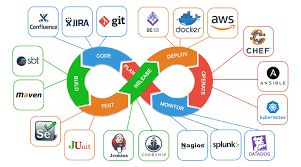Comprehensive Overview of Continuous Integration and Continuous Deployment (CI/CD)
 Emmanuel Eziogor
Emmanuel Eziogor
Introduction: Continuous Integration (CI) and Continuous Deployment (CD) are crucial practices in modern software development, aiming to enhance the efficiency, reliability, and speed of the software delivery pipeline. CI/CD is a set of principles and practices that enable developers to deliver high-quality software at a rapid pace while minimizing manual intervention. This writeup provides an in-depth understanding of CI/CD, its key components, benefits, and best practices.
Continuous Integration (CI):
CI is a development practice where developers regularly merge their code changes into a shared repository, followed by an automated build and testing process.
The primary goal is to detect integration issues early in the development cycle, ensuring that the codebase remains in a working state.
CI reduces the risk of bugs and conflicts by automating the compilation, testing, and validation of code changes.
Continuous Deployment (CD):
CD extends the CI process by automating the deployment of code changes to production environments.
The goal is to deliver software updates to end-users as quickly and reliably as possible.
CD includes continuous delivery (automated deployment to a staging or pre-production environment) and continuous deployment (automated deployment to production).
Key Components of CI/CD:
Version Control System (VCS): Central to CI/CD, VCS (e.g., Git) allows developers to track changes, collaborate, and manage code versions efficiently.
Automated Builds: CI systems (e.g., Jenkins, Travis CI) automatically compile source code, ensuring that it can be successfully built without errors.
Automated Testing: Comprehensive test suites (unit, integration, and acceptance tests) are executed automatically to validate the correctness and functionality of the code.
Artifact Repositories: CI/CD pipelines often produce artifacts (compiled binaries, deployable packages), which are stored in repositories for later use in deployment.
Benefits of CI/CD:
Faster Time to Market: Automation accelerates the software delivery process, allowing new features and bug fixes to reach users quickly.
Improved Code Quality: Early detection of integration issues and automated testing contribute to higher code quality and reliability.
Reduced Manual Errors: Automation minimizes the risk of human errors during the build, test, and deployment phases.
Enhanced Collaboration: CI/CD fosters collaboration among development, testing, and operations teams by providing a consistent and automated process.
Best Practices:
Small, Frequent Commits: Break down work into small, manageable units to facilitate frequent integration and testing.
Automated Testing: Maintain a robust suite of automated tests to ensure code stability and catch regressions.
Immutable Infrastructure: Treat infrastructure as code, enabling reproducibility and consistency across different environments.
Monitoring and Logging: Implement monitoring and logging to detect and diagnose issues in real-time.
Challenges and Considerations:
Security Concerns: Automated pipelines should include security checks to identify and address vulnerabilities.
Cultural Shift: Adopting CI/CD may require a cultural shift in the development team to embrace automation and collaboration.
Complexity: As CI/CD pipelines grow, managing and maintaining them can become complex, necessitating proper documentation and version control.
Conclusion: Continuous Integration and Continuous Deployment are pivotal practices in the modern software development landscape, promoting collaboration, efficiency, and high-quality software delivery. By automating key aspects of the development lifecycle, CI/CD enables organizations to respond rapidly to market changes and deliver reliable software to users. Embracing CI/CD practices is not only a technical decision but a cultural shift that fosters collaboration and innovation in software development teams.
Subscribe to my newsletter
Read articles from Emmanuel Eziogor directly inside your inbox. Subscribe to the newsletter, and don't miss out.
Written by
